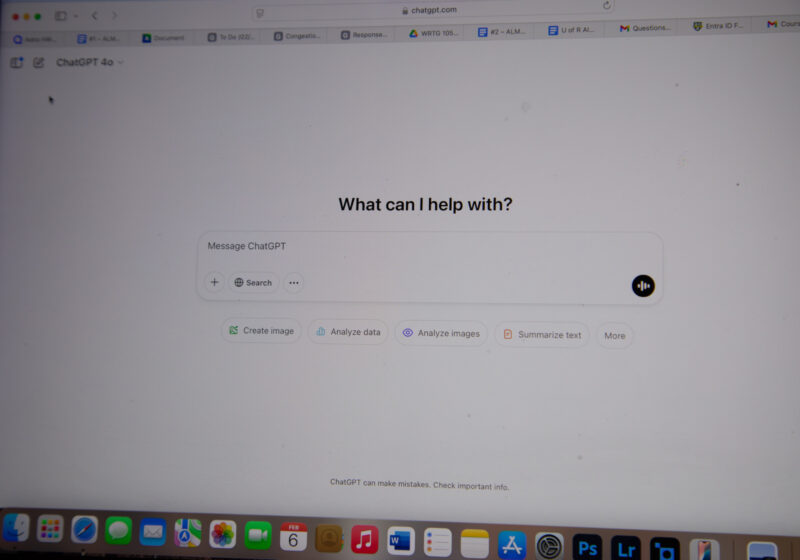In response to a recent barrage of executive actions taken by the new presidential administration, the UR President’s Office – in a Jan. 29 statement titled “Guidance on Executive Orders” – told its readers that the University is closely monitoring changing federal statutes, and outlined their responses to the current “fluid nature” of the political landscape.
Contrary to its title, the statement provides little guidance on navigating executive measures, on either an institutional or community level. One paragraph stood out for its underwhelming message and exceptional incompleteness — the one addressing inclusion and equity.
The University has an obligation to serve the needs of the full range of its students. In the wake of recent discourse on the role of Diversity, Equity, and Inclusion (DEI) in education and the workplace, it becomes increasingly imperative to understand what exactly DEI is and aims to do.
Federal DEI initiatives, notably Executive Order 13985: “Advancing Racial Equity and Support for Underserved Communities Through the Federal Government,” works to institutionally promote equity for people of color, religious minorities, persons with disabilities, and those facing lack of representation from poverty or rural residence in the Department of the Interior. Beyond support at a national level, the impact of these programs trickles down to support and provide advocacy for minority individuals on academic, social, and community levels.
But why do we need DEI on an institutional level? To understand why these measures are in place, we have to understand that bias and discrimination, both explicit and implicit, is far from a bygone problem — it permeates our communities in often unseen ways, manifesting in inequality that is both hard to identify and hard to address.
The concept of DEI is often distorted and misconstrued in the public sphere — much criticism hinges on a fundamental misunderstanding of what it aims to achieve. DEI is an attempt to systematically address these shortcomings; perhaps an imperfect solution, but far from the blatant favoritism for minorities that critics make it out to be. As students, DEI policies serve to ensure that each of our identities — ranging from race, ethnicity, and gender, along with social and political ideology — are protected against discrimination and bias. It facilitates student advocacy and preserves a sense of safety in environments where covert prejudice often arises, especially for students who come from minority and systemically marginalized communities.
Having these policies in place communicates to students not just that they are supported and wanted, but that they have a unique perspective to offer the broader university community.
Although the University statement includes sections on both “Inclusion and Equity” and “International Student Services,” it fails to explicitly mention and support minority students affected most by recent federal executive orders. The simple exclusion of the word diversity, particularly in a statement discussing DEI program dissolution, is discouraging. Notably, the President’s statement includes endorsements from other departments, but not from the Office of Equity and Inclusion, a central department concerning overarching DEI policies.
At a time like this, when DEI is under attack, actively uplifting the principle of diversity and furthermore acknowledging the diversity of UR’s student body is necessary to signify the recognition and protection of these students under federal pressures.
When President Donald Trump returned to office, he immediately signed a series of executive orders, one of which intended to eliminate DEI programs in the United States. The statement released by University officials reacted to many of the executive orders, but in the section specifically addressing Executive Order 13985, wrote that “we are committed to maintaining an open-minded, respectful community” and that “in accordance with our obligations under federal law, we will continue to maintain that standard for our community.”
This is immediately problematic: According to federal law, DEI programs now represent “illegal and immoral discrimination.” In other words, in line with federal law, the University has no obligation to maintain standards of diversity, equity, and inclusion. While we understand that the University receives federal funding and has to follow federal regulations, the University has an immutable obligation to their diverse body of students to ensure their safety on campus. Simply put, the statement they released isn’t enough.
Of course, the statement’s negligible impact goes beyond its words — or lack thereof. Along with the removal and deemed illegality of DEI programs, the Trump administration has restructured Immigration and Customs Enforcement (ICE) guidelines to allow agents on school grounds and removed “TQ+” from federal LGBTQ+ travel resources, further creating an unsafe environment for students targeted or profiled by this change.
The later-released Federal Policy Changes FAQ addresses ICE-related policies and the office’s original message directs students to the International Services Office (ISO) main page for services with visa updates, travel advisories, and more. However, this leaves a major gap for students, particularly POC and LGBTQ+ individuals, who need both reassurance of their safety and provided support from the university they attend.
The University’s Office of Equity and Inclusion website contains “A Commitment to ‘Ever Better,” a short statement on how the Office of Equity and Inclusion is dedicated to fostering diversity, equity, and inclusion within the Rochester community. This University statement also fails to outline their plans to uphold diversity, equity, and inclusion moving forward.
Despite the continued lack of a statement on behalf of the University as a whole, internal DEI committees within departments, such as Mechanical Engineering, Brain and Cognitive Science, the Writing Speaking and Argument Program, and other University-affiliated organizations such as University Health Services (UHS) have published resources and statements in relation to diversity, equity, and inclusion. Individual department websites also provide commitments and specifics of how they each uphold values associated with aspects of DEI.
The University released another statement, “Federal Policy Changes: Updates and guidance for the University community,” Feb. 7 outlining topics and frequently asked questions for updates on immigration, research, and data privacy and legal protections. The released statement asserts, “While awaiting further guidance from federal agencies, the University will continue to comply with all state and federal laws governing our programs.” Although it claimed to answer frequently asked questions, the statement did not provide any real context for the University’s plans to preserve DEI.
Student comfort and safety is crucial to fully promoting diversity, equity, and inclusion — so when the University has resources, why don’t they promote them?
With the introduction of recent executive orders regarding DEI, these changes at the federal level will inevitably impact a variety of groups on campus. A sense of community and acceptance is crucial at times like these; students can visit centers around campus to reach out for peer and general support.
One resource is the Paul J. Burgett Intercultural Center (BIC) located on the third floor of Douglass Commons, which strives to promote cultural awareness and bring a sense of inclusion and equity to the University campus. They host a variety of events and workshops surrounding issues of identity, diversity, and culture, ultimately working towards the goal of an inclusive campus. The BIC offers an opportunity to submit a bias incident report and provides a space on campus for collaboration and conversations surrounding cultural and diverse identity intersections.
Another resource center, with a particular focus on first-generation, low-income, and minority students, is the David T. Kearns Center. In addition to providing more educational and academic resources and opportunities, they offer events that enrich the understanding and knowledge of minority backgrounds and provide an inclusive and welcoming environment on the fourth floor of Dewey.
It is important to note that these are not the only resources available on campus to support students; rather, there are a multitude of departments to explore, including UHS and ISO. As federal law continues to change in the upcoming months, don’t hesitate to contact resources on campus or join or build a support network amongst peers to get through these changing times.
The Editorial Board is an Opinions article representing the view of the Campus Times, co-written by Editor-in-Chief Emmely Eli Texcucano; Publisher Sherene Yang; Managing Editors Maya Brosnick, Alex Holly, and Helena Feng; Opinions Editors Addison Baker and Eva Naik; and Editor-at-Large Natalie Opdahl.





